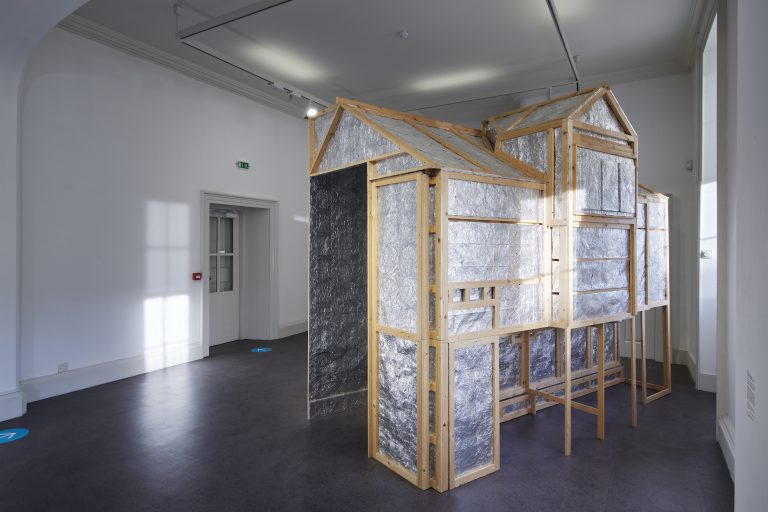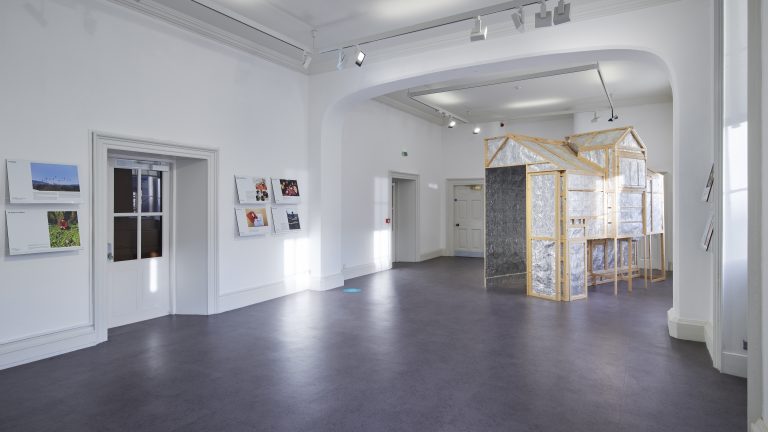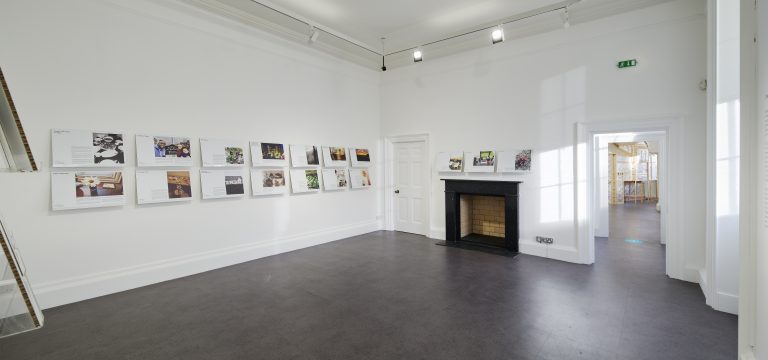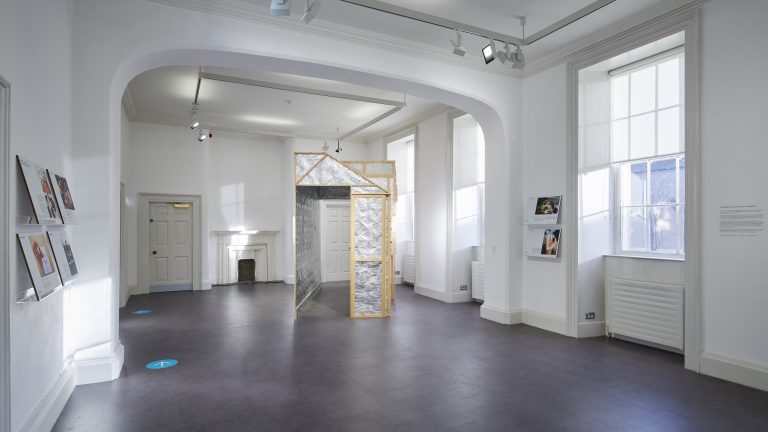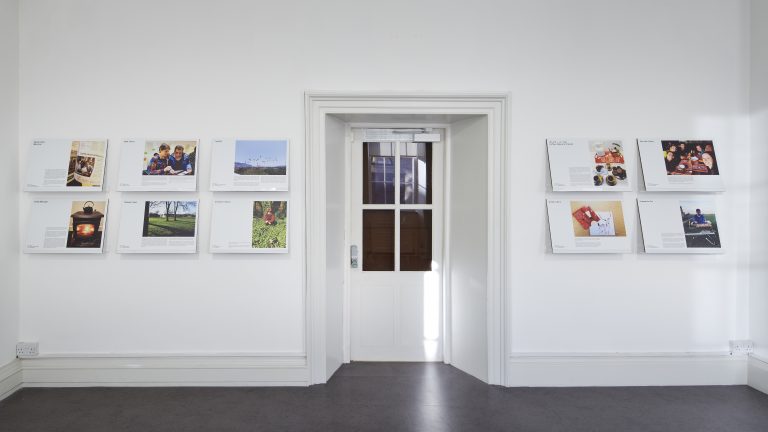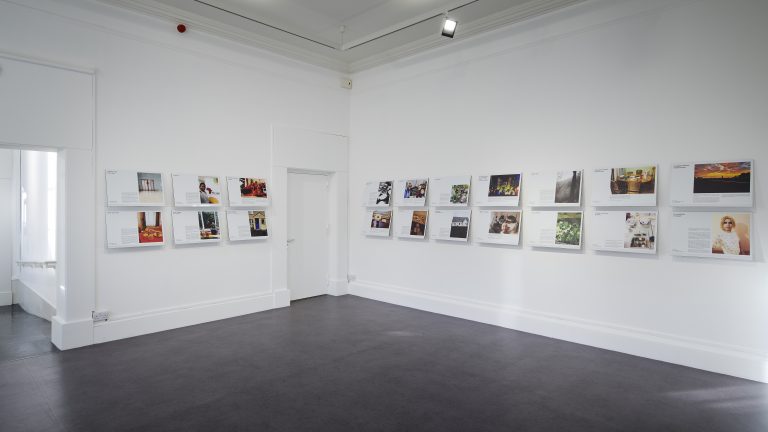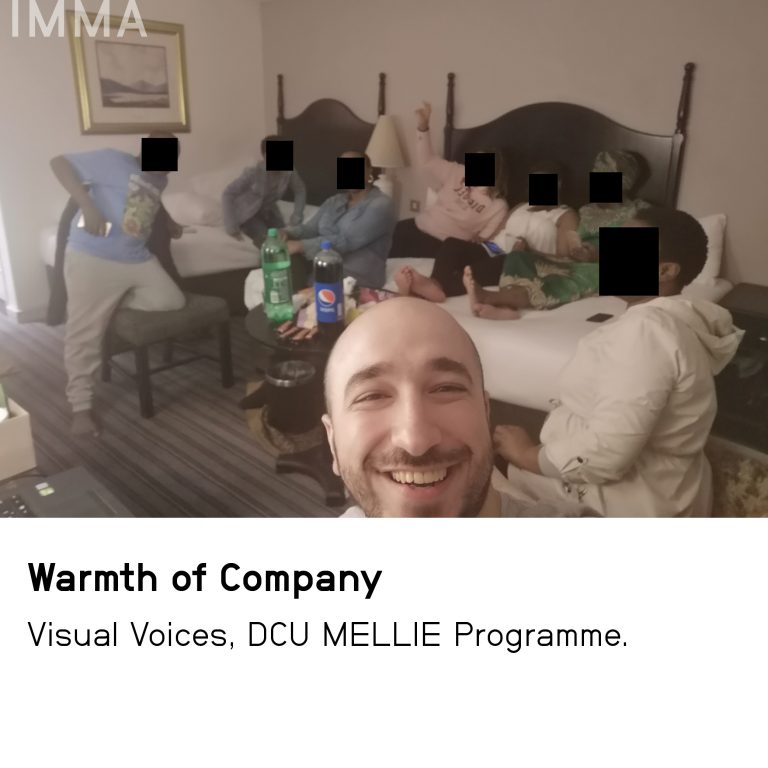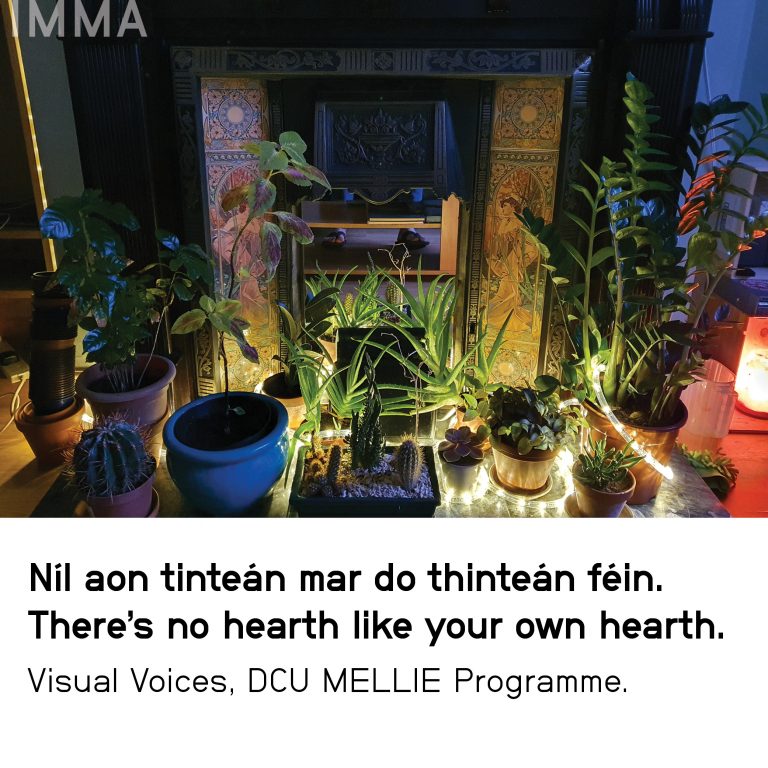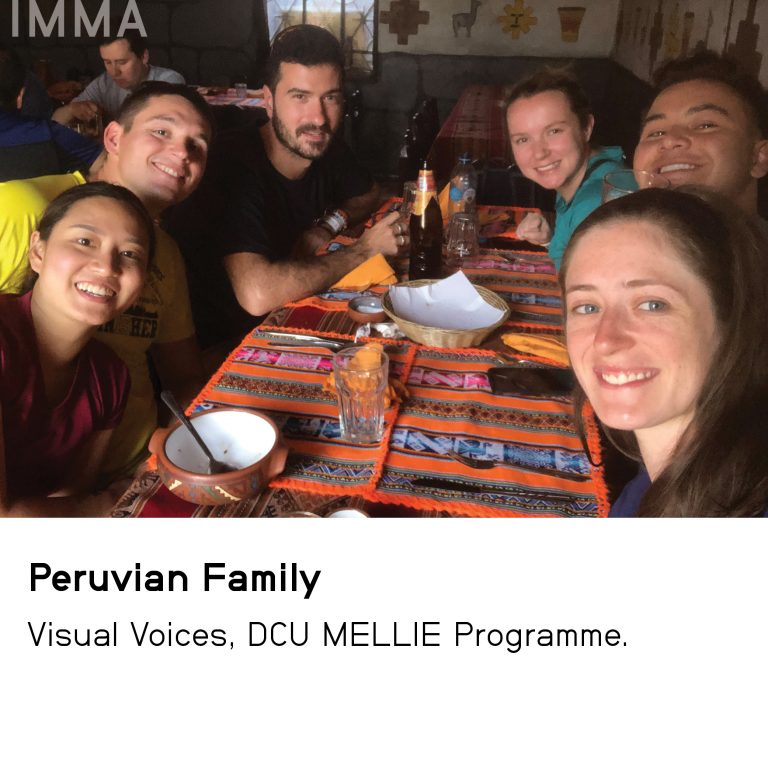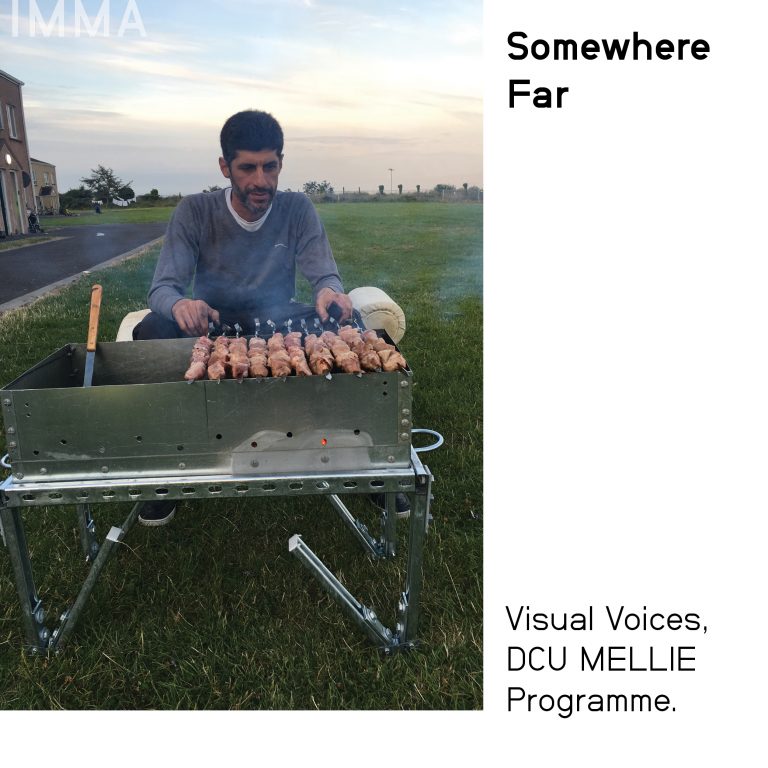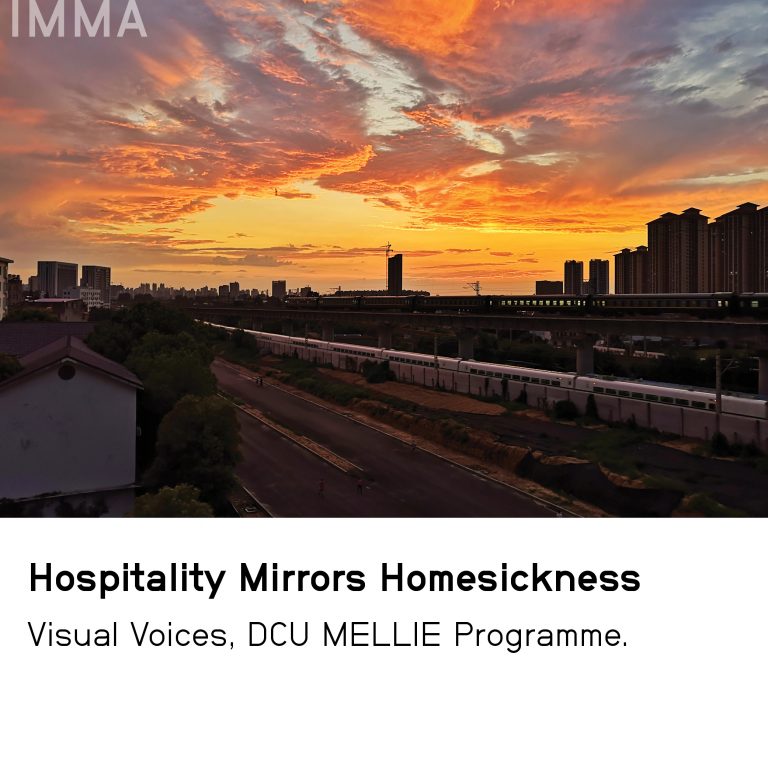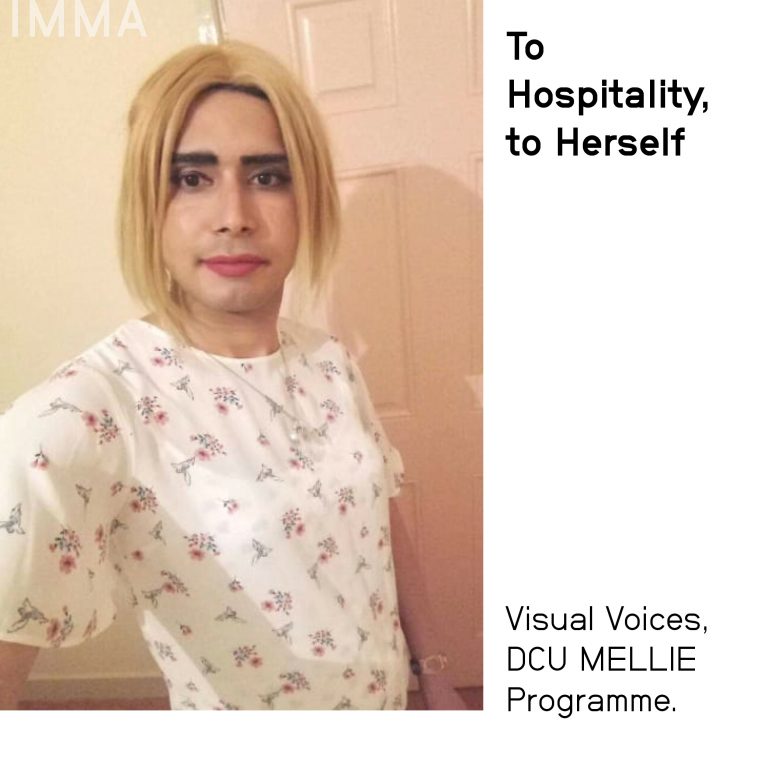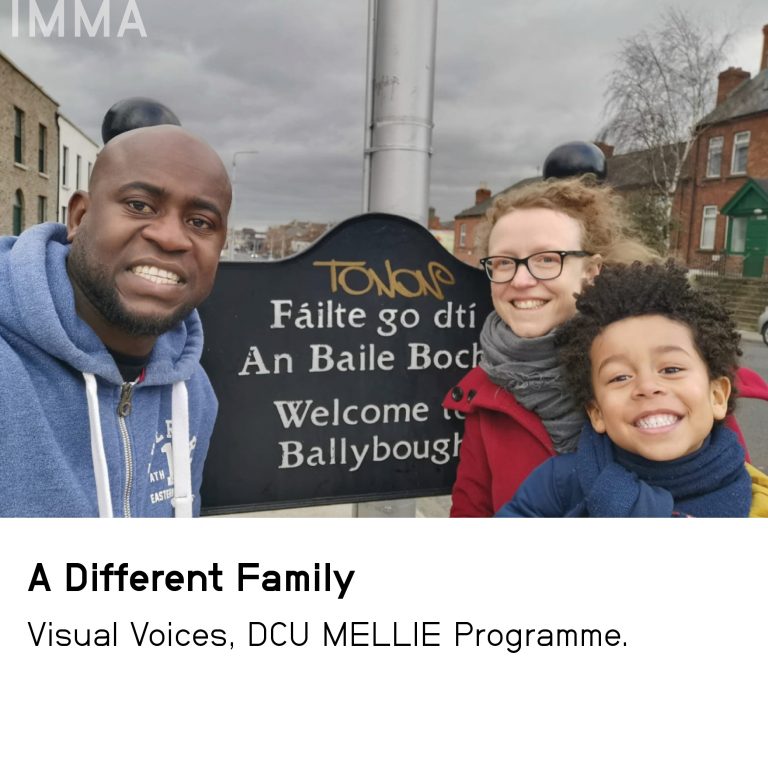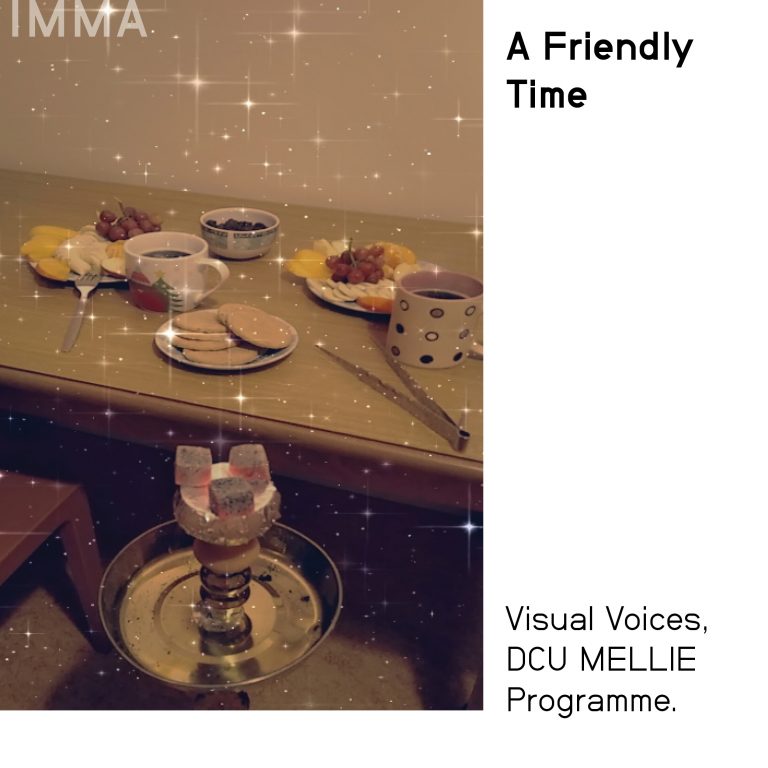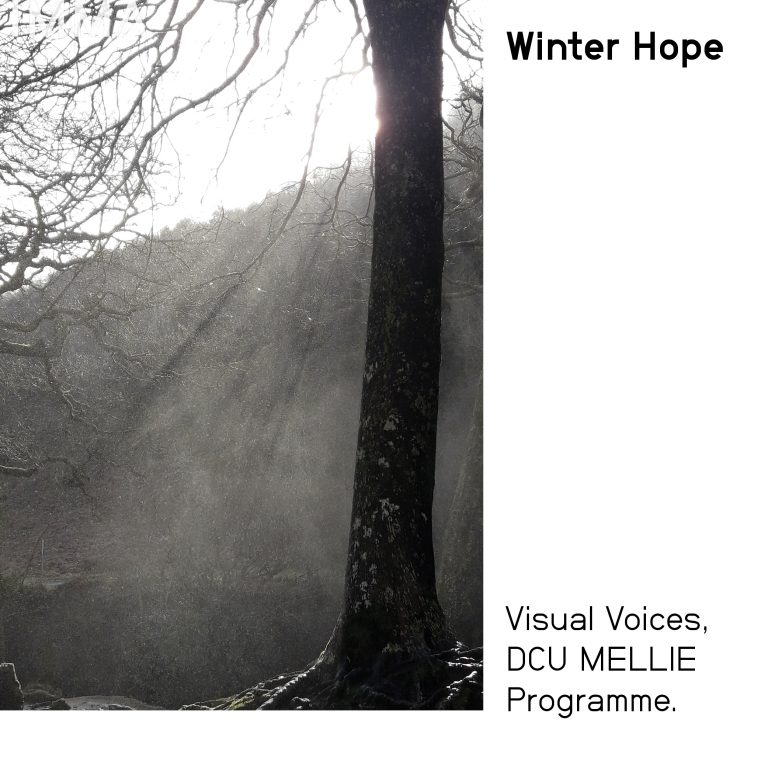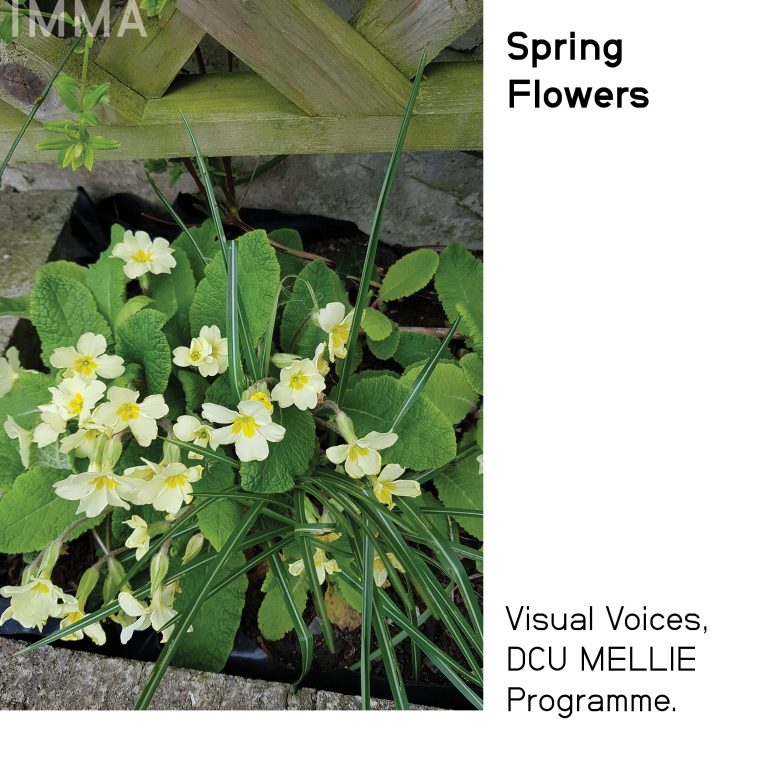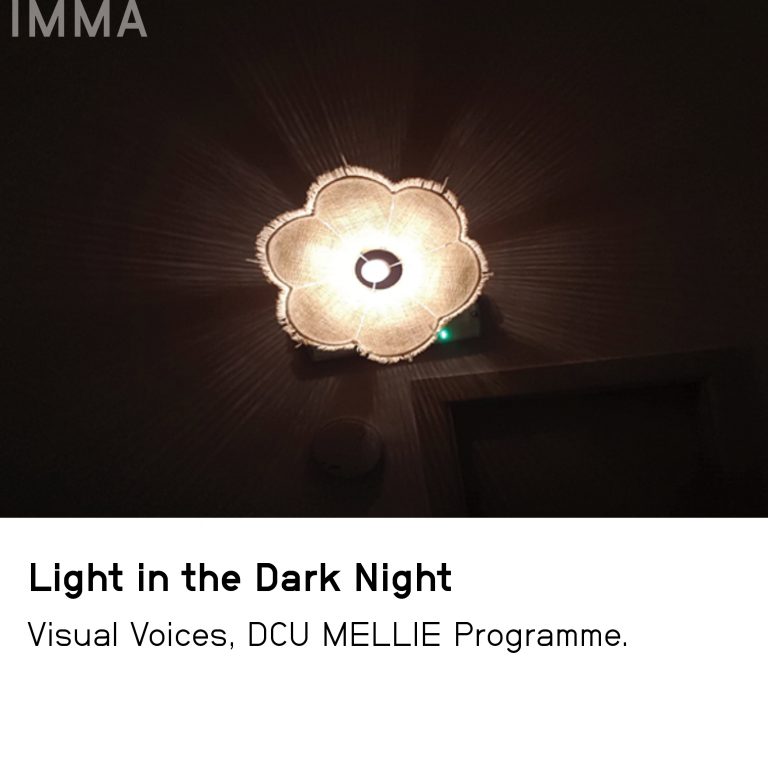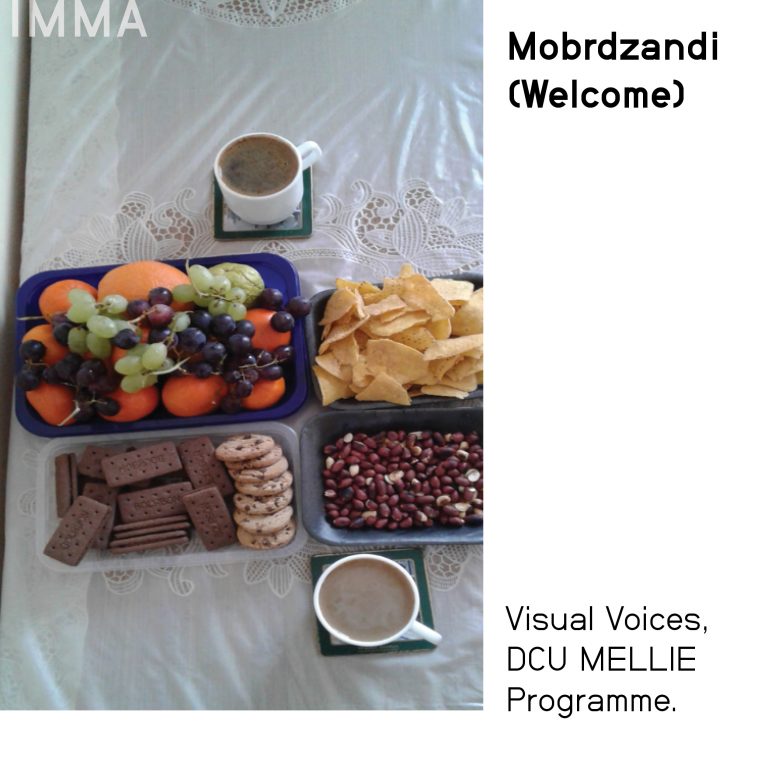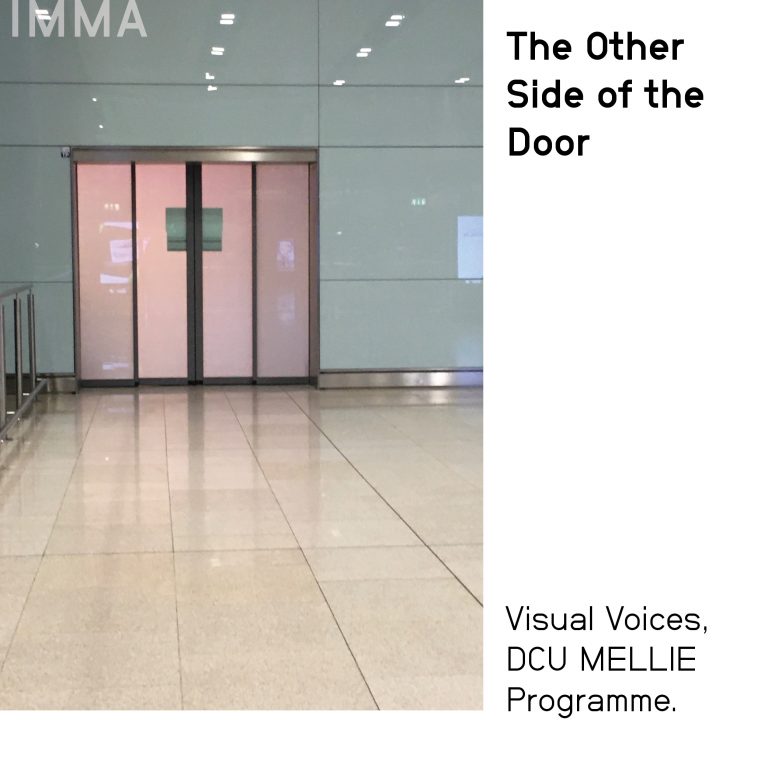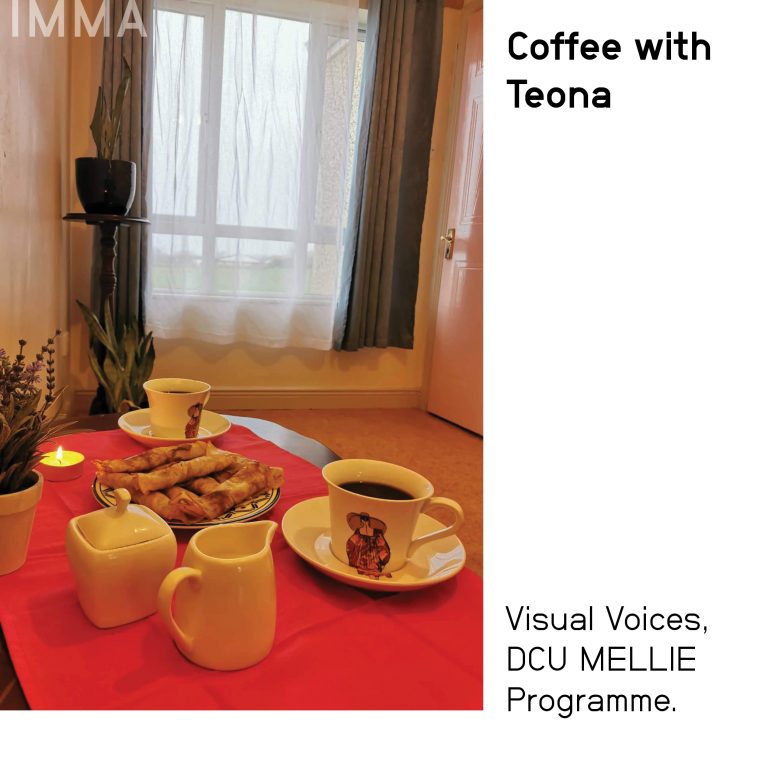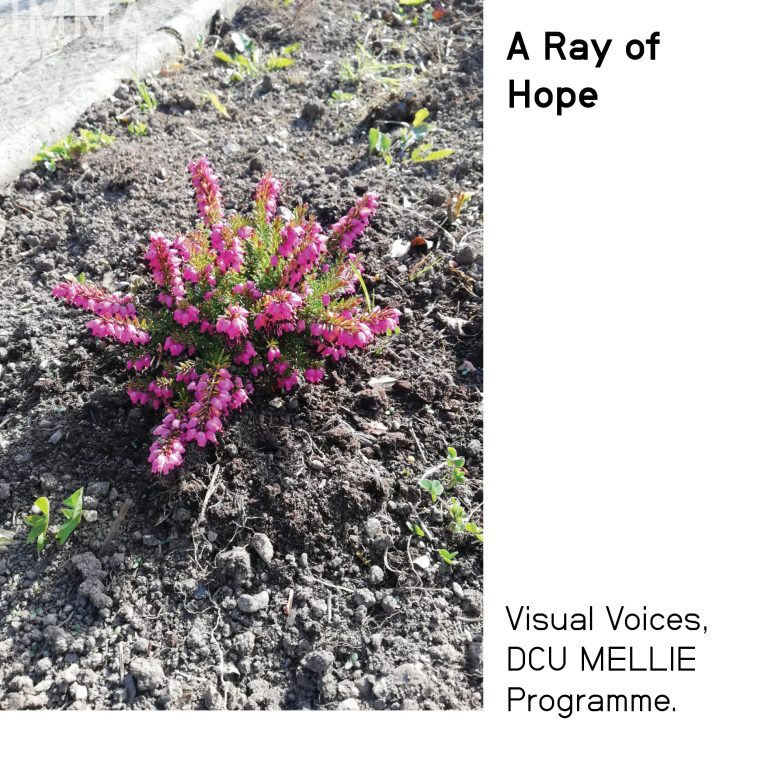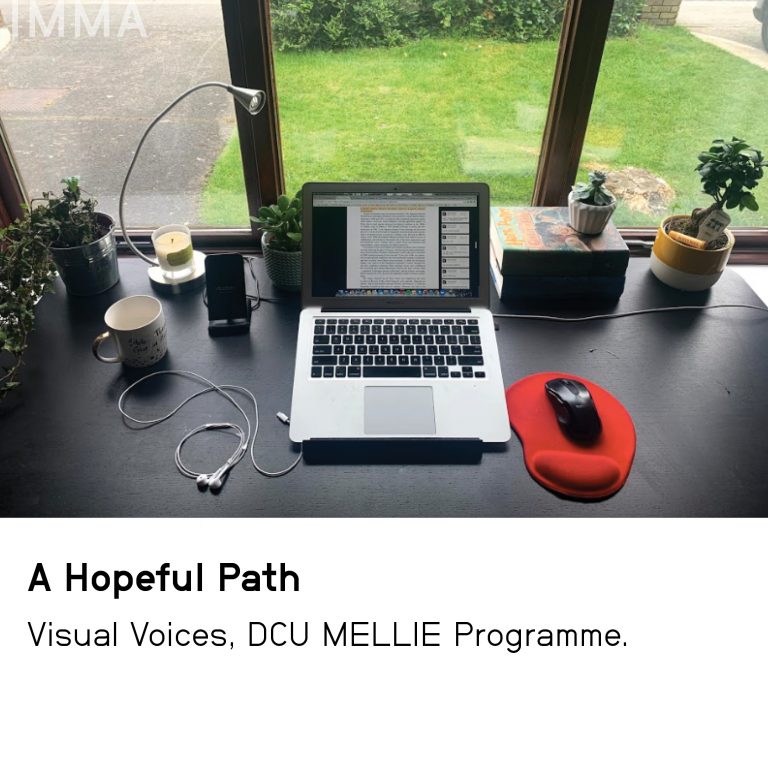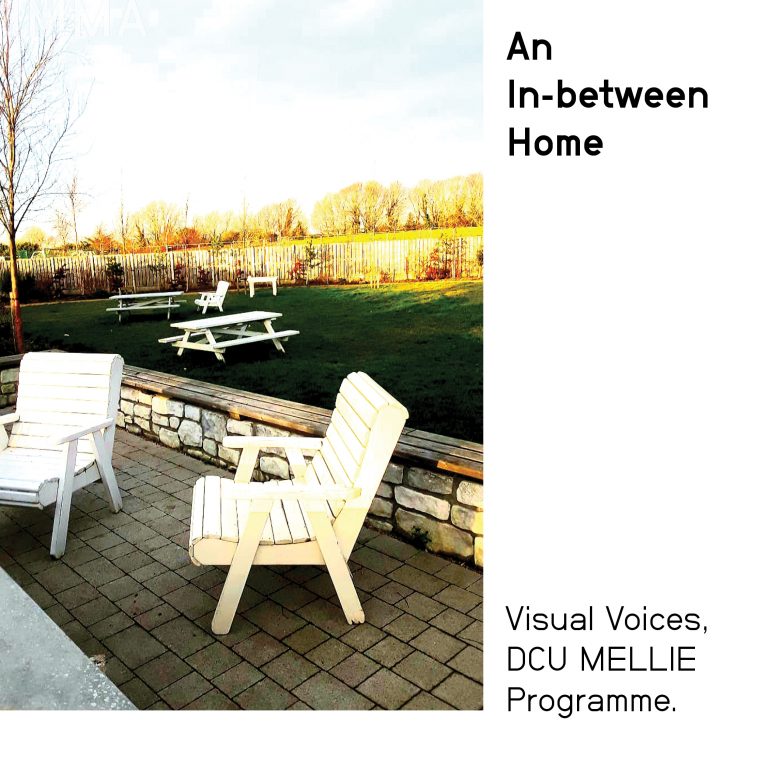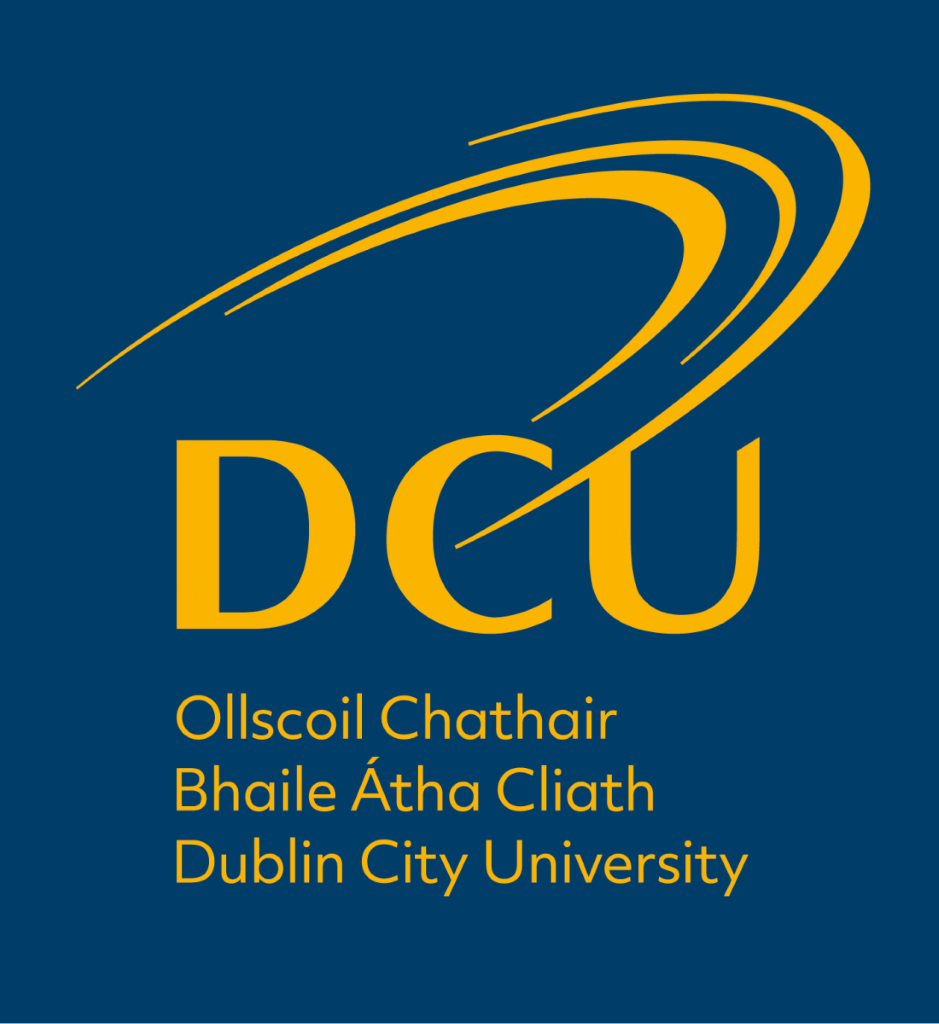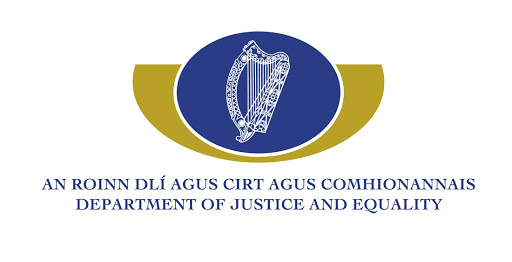Exhibiting in these spaces are works from The Dublin City University (DCU) MELLIE Programme’s Visual Voices which are presented alongside the IMMA Collection work Bok Gwai / White Ghost (2005) by artist Anthony Key. Through contrasting processes, both projects probe themes of hospitality, identity and displacement to address connected experiences.
The DCU MELLIE Programme’s Visual Voices is a collaborative storytelling project promoting equality, intercultural dialogue and social inclusion, facilitated by PhD candidate, Julie Daniel. Visual Voices adopts a photovoice methodology of sharing stories, recorded through image and text, to reflect the perspectives of everyone involved, DCU and Direct Provision participants alike. It tells the experiences of the individuals behind the labels of ‘migrant’, ‘refugee’, ‘asylum seeker’, ‘staff’ and ‘student’. The projects presented focus on the themes of hospitality and hope.
Anthony Key’s installation work Bok Gwai / White Ghost is made from a surprisingly familiar material. The iconic takeaway foil carton has been flattened and repurposed as a tile, the material is then impressed and amassed to create a precise 3D replica of a kitchen. Addressing themes of displacement, stereotypes, nostalgia and the power of food to psychologically transport someone to a place more familiar than where they are, this work implies many humble yet powerful associations with culture and identity.
Visual Voices; the exhibition
Visual Voices adopts a photovoice methodology of sharing stories, recorded through image and text, to reflect the perspectives of everyone involved, DCU and Direct Provision participants alike. The text accompanying each image shares the experiences of the individuals, focussing on themes of hospitality and hope.
Click here to see the work of all the participants in the exhibition and read the full texts
